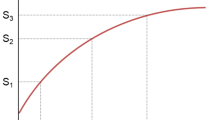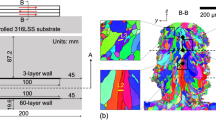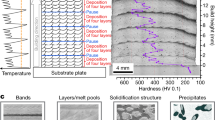Abstract
MOST powdered metals will sinter together appreciably when heated to a temperature which, in the absence of extraneous factors, is about three-quarters of their absolute melting point; metals of low melting point tend to be exceptions, however, to this generalization in that they can be heated nearly to their melting point before sintering takes place. There is no evidence, in fact, that tin has ever been observed to sinter1. Tin powder is usua0lly made by the atomization of the molten metal and particles of the powder become coated with a film of stannic oxide; this oxide cannot be reduced below the melting point of tin by any atmosphere normally used in sintering. It has already been found2 that sintering previously pressed powder leads to no further densifieation of the compact and confers no beneficial properties on it. The inability of tin to undergo sintering has been generally assumed, but never shown, to be due to the presence of unreduced oxide films.
This is a preview of subscription content, access via your institution
Access options
Subscribe to this journal
Receive 51 print issues and online access
$199.00 per year
only $3.90 per issue
Buy this article
- Purchase on Springer Link
- Instant access to full article PDF
Prices may be subject to local taxes which are calculated during checkout
Similar content being viewed by others
References
Geach, G. A., “Progress in Metal Physics”, 4, 174 (Pergamon Press, 1953).
Greenfield, L. T., Ph.D. thesis, University of London (1952).
Author information
Authors and Affiliations
Rights and permissions
About this article
Cite this article
SMART, R., ELLWOOD, E. Sintering of Tin Powder. Nature 181, 833–834 (1958). https://doi.org/10.1038/181833a0
Issue Date:
DOI: https://doi.org/10.1038/181833a0
This article is cited by
-
Microstructures, hardening and tribological behaviors of tin matrix composites reinforced with SiC and Zn particles
Rare Metals (2021)
-
Post-treatment Process of Semi-solid Powder Rolling
Acta Metallurgica Sinica (English Letters) (2015)
-
The Oxidation Behaviors of 7,050 Aluminum Strips During Semi-solid Powder Rolling and Mechanical Properties of Strips
Oxidation of Metals (2015)
-
Layered Sb2Te3 Nanoflakes as Chalcogenide Dielectrics
Journal of Electronic Materials (2013)
-
The influence of the atmosphere on the sintering of aluminum
Metallurgical and Materials Transactions A (2002)
Comments
By submitting a comment you agree to abide by our Terms and Community Guidelines. If you find something abusive or that does not comply with our terms or guidelines please flag it as inappropriate.



